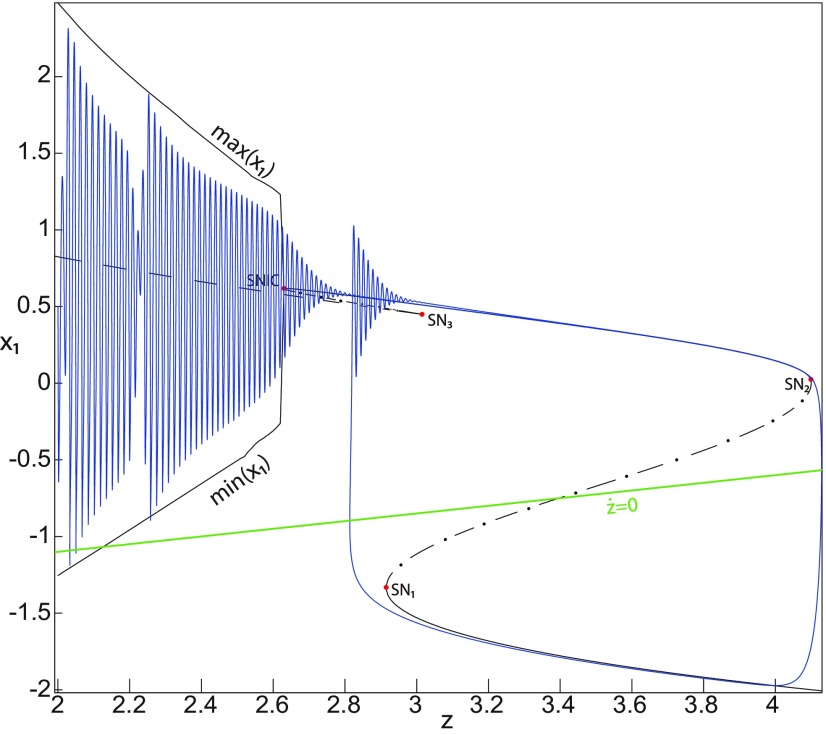Figure 8.
The Epileptor model bifurcation diagram with respect to the slow variable z (m = − 1, Iext2 = 0). The Z-lower (solid), Z-middle (dash-dotted), and Z-upper (solid) branches consist of stable nodes, saddles, and stable foci, respectively. Decreasing z, the Z-lower and Z-middle branches collide in an SN1 bifurcation. Increasing z, the Z-upper and Z-middle branches collide in an SN2 bifurcation. Below the Z-upper branch, lower (dashed) and upper (dash-dotted) branches corresponding to unstable foci and saddles respectively, collide in an SN3 bifurcation. The Z-upper (solid) branch and the upper (dash-dotted) branch below collide as z decreases in a SNIC bifurcation. Let x0 = −1.6, the z-nullcline () is at the Z-middle branch. A SLE reduces to a periodic switch between a nonoscillatory state and a NS, which occurs through a fold/fold bifurcation. For the (deterministic) trajectories, r = 0.0008, I.C = [0.5 −5 2 0 0 0.01] and Ts = [0:0.001: 1400].

